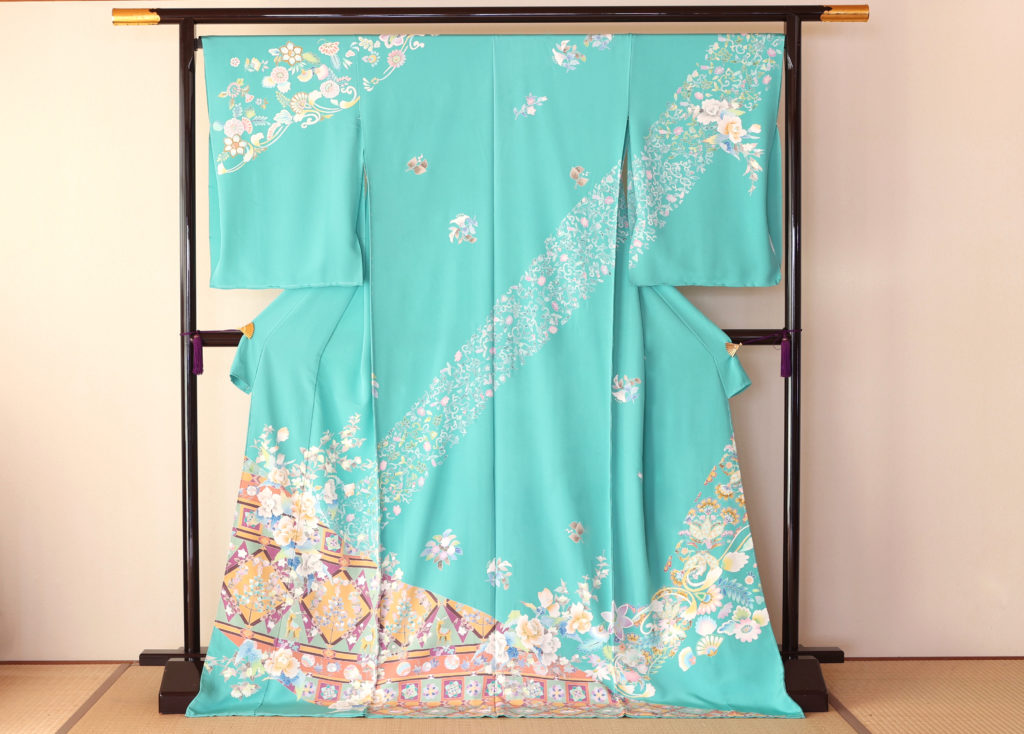加賀友禅
Pronunciation: Kaga-yuzen
Production area: Kanazawa City and surrounding areas, Ishikawa Prefecture
Kaga-yuzen is a dyeing technique known for its realistic depictions of Japan’s natural beauty. Based on the rich tones of the traditional “Kaga Gosai” (five colors of crimson, indigo, ochre, grass green, and royal purple), it has a refined samurai-style elegance. Distinctive techniques include “soto-bokashi” (gradation from dark on the outside to lighter inside) to create depth, and “mushikui” (depicting leaves with insect bites) to emphasize the realism of nature. Unlike Kyo-yuzen, which uses gold leaf, shibori, and embroidery lavishly, Kaga-yuzen relies almost exclusively on dyeing to create its unique world of expression.
Kaga had already developed a local dyeing method known as “Umezome” about 500 years ago. By the Edo period, the region saw the rise of “Kaga Okuni-zome” which included Kanefusa-zome and colored motifs. Later, the painter Miyazaki Yuzen, founder of Kyoto Yuzen, moved to Kanazawa, bringing bold design techniques that helped establish and advance Kaga Yuzen. The production involves nine main processes, each requiring advanced skill.
Another related method is Itaba Yuzen, a stencil-dyeing technique also called Kata Yuzen or Kaga Komon-zome, known for its intricate and delicate motifs, distinct from hand-painted Yuzen.
In 1975, Kaga Yuzen was designated as a National Traditional Craft.
See Also: Traditional Craftsmanship Vol.5 “Kaga Yuzen” | Mr. Katsumasa Okuda




















